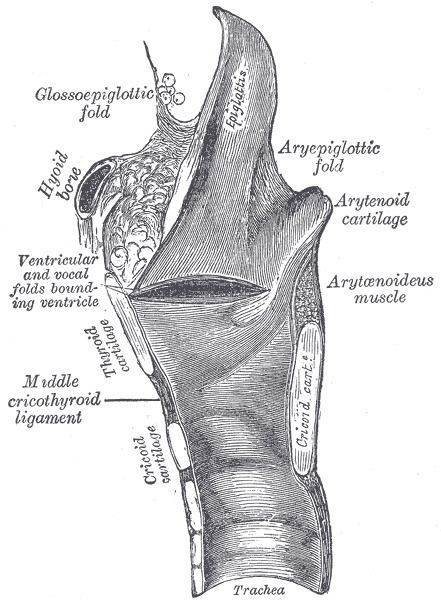Latin cavitas laryngis TA A06.2.09.001 | Dorlands
/Elsevier 12220483 FMA 55263 | |
 | ||
The laryngeal cavity (cavity of the larynx) extends from the laryngeal inlet downwards to the lower border of the cricoid cartilage where it is continuous with that of the trachea.
It is divided into two parts by the projection of the vocal folds, between which is a narrow triangular opening, the rima glottidis.
The portion of the cavity of the larynx above the vocal folds is called the vestibule; it is wide and triangular in shape, its base or anterior wall presenting, however, about its center the backward projection of the tubercle of the epiglottis.
It contains the vestibular folds, and between these and the vocal folds are the ventricles of the larynx.
The portion below the vocal folds is called the infraglottic cavity. It is at first of an elliptical form, but lower down it widens out, assumes a circular form, and is continuous with the tube of the trachea.
